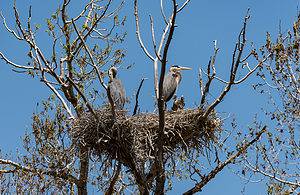
The post The Indian Jumping Ant’s Unbelievable Hunting and Survival Skills appeared first on A-Z Animals.
There are boxing crabs, snapping turtles, and even screaming hairy armadillos. The Indian jumping ant gives any of these action animals a run for their money. These rare ants, found in India, live in small groups but are capable of some incredible feats. In this YouTube video, a researcher shows one of these ants up close as it makes a tremendous leap.
Indian jumping ants aren’t the only ants known for their jumping abilities. Other species of ant, like the Gigantiops destructor, are known for their jumps as well as their eyes (the largest among any type of ant). Indian jumping ants, however, have plenty of fascinating attributes that set them apart. Let’s learn about their jumps, their colonies, and more.
Gigantic Jumps

Indian jumping ants are capable of jumping several inches in the air.
©Youtube/AntLab
The Indian jumping ant, also called Jerdon’s jumping ant (Harpegnathos saltator), is found in Western India. More rarely, it’s found in the northwestern Indian state of Punjab, the state of West Bengal, as well as on the island of Sri Lanka. They have a relatively reddish coloring, but are best characterized by their long, upward-curving mandibles and large eyes. One of their most standout features, however, is their ability to jump several inches.
In this YouTube video, a camera crew visits a biology lab at Arizona State University to learn more about these little leapers. In the video, a researcher puts his finger close to one of the Indian jumping ants. When his finger is just about to touch it, the Indian jumping ant makes a mighty leap out of danger. In the process, it spins almost like a snowboarder doing a McTwist or Rodeo Flip. It’s an incredible move, one that’s rare in the world of ants, and all the more impressive considering it’s jumping several times its own body length. They accomplish these legendary leaps through a synchronized movement of both their middle and hind pairs of legs.
Stalking Prey

Not only do Indian jumping ants leap to escape, they also pounce on prey.
©Youtube/AntLab
Later in the video, the camera catches an ant as it approaches a tasty cricket. After assessing its prey with its outsized eyes, the ant pounces on the cricket and locks it in its mandibles. Once it has secured the cricket, the ant curves its back toward the prey and uses its stinger to inject paralyzing venom. The ant takes its time, repositioning its stinger several times. After the cricket is sufficiently subdued, the ant makes a flying leap while holding its prey. It’s time to take it back to the nest.
Curious Colonies

These ants build colonies that are close to the ground, featuring entrances that they close at night with grass and leaves.
©Youtube/AntLab
While most ants are known for forming large, labyrinthine colonies, Indian Jumping Ants prefer to live in small, tight-knit groups. In the cool morning hours, workers venture out alone or in small groups to hunt. After something of a siesta during midday, they go hunting again in the afternoon. Once nightfall arrives, they return to their colonies, which themselves contain very few ants relative to other ant species.
Indian jumping ant colonies are low to the ground, with a small entrance encircled by leaves and twigs. After all the workers have arrived back home for the day, ants close the entrance. The colonies usually have a funnel-like entrance leading into a vestibule, which scientists believe helps prevent flooding of the main chamber where the queen lives.
Social Stakes

If the queen dies, Indian jumping ant workers will engage in a ritualized battle to decide who can lay eggs.
©Youtube/AntLab
Unlike other types of ants, Indian jumping ants are pretty adaptable. While males are slim and delicate, workers are narrow but with big eyes, and do most of the hunting. The queens, however, don’t look much different from workers. Usually, queens are treated like precious gems in ant colonies, but Indian jumping ants know how to improvise. If the queen dies, the colony survives. But first, the workers must engage in a type of ritualized combat.
This battle royale tournament involves a lot of jousts. The workers use their antennae and mandibles as jousting rods to come out on top. Remarkably, these battles can last for several weeks, with some individuals continuing to duel for over a month. The winners earn a chance to become reproductive, egg-laying workers. They are called gamergates, and are one of the more fascinating figures in the world of ants.
Gamergates

Scientists discovered that Indian jumping ant can turn into reproductive females called gamergates, which shrinks their brain size by one-fifth.
©Youtube/AntLab
If a worker earns the status of gamergate, her body reflects it. Suddenly, her physiology changes, including altered insulin signaling, and her lifespan expands from several months to several years. What’s more, a gamergate changes internally.
Her brain begins to shrink, losing a fifth of its mass, while her ovaries swell in preparation for egg-laying. It seems that once a worker becomes a gamergate in a distorted form of a fairy tale, she doesn’t need much brain power. Instead, she produces eggs while food is delivered to her. If these surrogate queens lose their status, they simply revert to being workers and regain their previous brain size. As researched in a study published in Proceedings of Royal B, this is the first time scientists have found an insect that can lose and regain brain matter.
The post The Indian Jumping Ant’s Unbelievable Hunting and Survival Skills appeared first on A-Z Animals.
August 25, 2025 at 06:32PMTad Malone
.jpeg)
.jpeg)

0 Comments